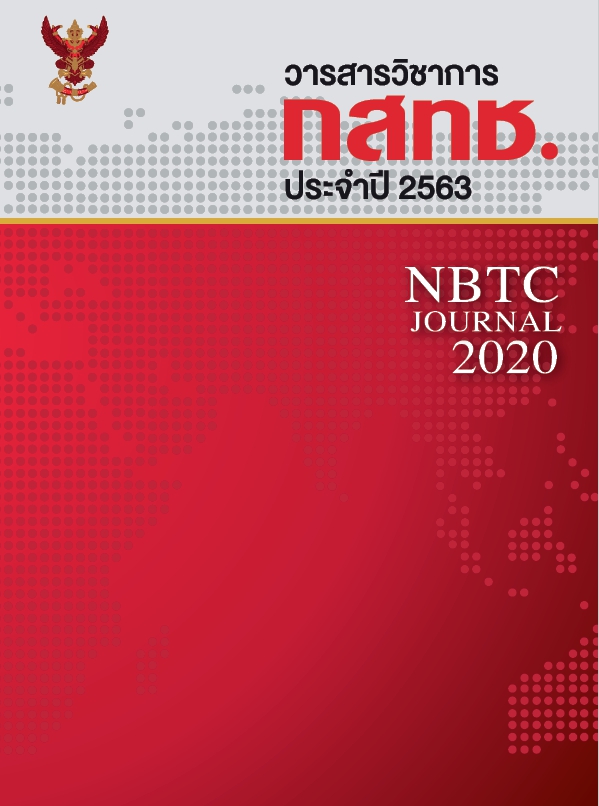Prototype Development of SMART Agriculture Platform Integrating Remote Sensing Technology with AquaCrop Model
Keywords:
Smart Agriculture, Rice Yield, Satellite Remote Sensing, AquaCrop ModelAbstract
This article aims to report the result of SMART Agriculture Platform prototype consists in AquaCrop processing system with satellite derived inputs i.e. FY rainfall and TERRA/AQUA land surface temperature (LST) and modification of canopy cover (CC) to predict rice yield using crop simulation model. The output is displayed via the mobile application called RiceSAP and web service, offering farmers and government officer with fully functions updated daily to monitor crop growth and conditions and predict rice yield. The web service displays rice yield prediction at sub-district level. The system can monitor spatial and temporal information of droughts and flood which updated every 15 days in order to support efficient planning on water management. The results show that yield predictions of White rice in Ayutthaya province shows 12.7% of mean absolute percentage error (MAPE), and 6.45% of MAPE for Jasmine rice in Roi Et province. For RiceSAP application, the platform operation was tested by 20 farmers in each province. It is founded that average of MAPE are 21.77% and 17.87% in Ayutthaya and Roi Et, respectively. As a result, the platform service can be extended for rice field monitoring at the country region without extra cost. Moreover, with the same approach, the platform usability can be applied for industrial crops such as maize and cassava. Therefore, this platform is useful for promoting smart agriculture sector in Thailand.
References
กรมการข้าว. (2559). รายงานสถานการณ์การเพาะปลูกข้าว ปี 2559/60 รอบที่ 1. 5. ค้นเมื่อ 1 กรกฎาคม, 2561, จาก http://www.ricethailand.go.th/web/home/images/brps/text2559/15092559/ 15092559.pdf.
วัชรี วีรคเชนทร์ และคณะ. (2563). รายงานฉบับสมบูรณ์โครงการการพัฒนาต้นแบบ SMART Agriculture Platform
ด้วยการบูรณาการเทคโนโลยีการรับรู้ระยะไกลร่วมกับแบบจำลอง AquaCrop. ม.ป.ท.
สมาคมผู้ส่งออกข้าวไทย. (2560). สรุปสถานการณ์ส่งออกข้าวไทยปี 2560 และแนวโน้มและทิศทางการส่งออกข้าวไทยปี 2561, ค้นเมื่อ 1 กรกฎาคม, 2561, จาก ttp://www.thairiceexporters.or.th/Press%20release/2018/TREA%20Press%
Release%20Thai%20Rice%20Situation%20&%20Trend%202018-31012018.pdf.
สำนักงานเศรษฐกิจการเกษตร. (2560). ผลผลิตข้าวตามเนื้อที่เก็บเกี่ยว [ไฟล์ข้อมูล], ค้นเมื่อ 31 กรกฎาคม, 2561.
สำนักแรงงานจังหวัดพระนครศรีอยุธยา (2559). รายงานสถานการณ์แรงงานจังหวัดพระนครศรีอยุธยา ไตรมาส 1 ปี 2559.
ค้นเมื่อ 1 กรกรกฎาคม 2562, https://ayutthaya.mol.go.th/wpcontent/uploads/sites/45/2019/02/
elmsthaankaarnaitrmaas1-59.pdf.
Allen, G. R., Pereira, L. S., Raes, D. & Smith, M. (1998). Crop Evapotranspiration. Guidelines for Computing Crop Water Requirements. 19. Retrieved June 7, 2018, from https://www.researchgate.net/publication/
_Crop_evapotranspiration-Guidelines_for_computing_crop_water_requirement FAO_Irrigation
_and_drainage_ paper_56.
Economic and Social Commission for Asia and the Pacific : ESCAP. (2017). The Economic and Social Commission for Asia and the Pacific 2017. Disaster Resilience for Sustainable Development. 7. Retrieved June 7, 2018, from https://www.unescap.org/sites/default/0files/publications/Survey%202017-Final.pdf.
Food and Agriculture Organization of the United Nations : FAO. (2017). AquaCrop standard windows programme Version 6.0 [Computer software]. Retrieved June 7, 2018, from http://www.fao.org/aquacrop/
software/aquacropstandardwindowsprogramme/en/ #c522959.
Food and Agriculture Organization of the United Nations : FAO. (2017). The calculation scheme of AquaCrop. AquaCrop training handbooks: Book I Understanding AquaCrop,3. Retrieved June 7, 2018, from http://www.fao.org/3/a-i6051e.pdf.
Hargreaves, G. H. & Samani, Z. A. (1985). Reference Crop Evapotranspiration from Temperature. 3. Retrieved June 7, 2018, from https://www.researchgate.net/ publication/247373660_Reference_Crop_Evapotranspiration_
From_Temperature.
Johannes, H., et al. (2011). REDSIM: Approach to soil water modelling. Tools and data considerations to provide relevant soil water information for deficit irrigation. 15 Retrieved June 7, 2018, from https://
www.futurewater.nl/wp-content/uploa
UNITED NATION ESCAP. (2020) Disaster Resilience for Sustainable Development : Asia-Pacific Disaster Report 2017. Retrieved June 7, 2018 from https://www.unescap.org/sites/default/files/1_DISASTER%20Report%
%20Low%20res.pdf
Downloads
Published
How to Cite
Issue
Section
License
The Office of the NBTC holds the copyright of articles appearing in the journal. The Office of the NBTC allows the public or individuals to distribute, copy, or republish the work under a Creative Commons license (CC), with attribution (BY), No Derivatives (ND) and NonCommercial (NC); unless written permission is received from the Office of the NBTC.
Text, tables, and figures that appear in articles accepted for publication in this journal are personal opinion and responsibility of the author, and not binding on the NBTC and the Office of the NBTC. In case of errors, each author is solely responsible for their own article, and not concerning the NBTC and the NBTC Office in any way.


